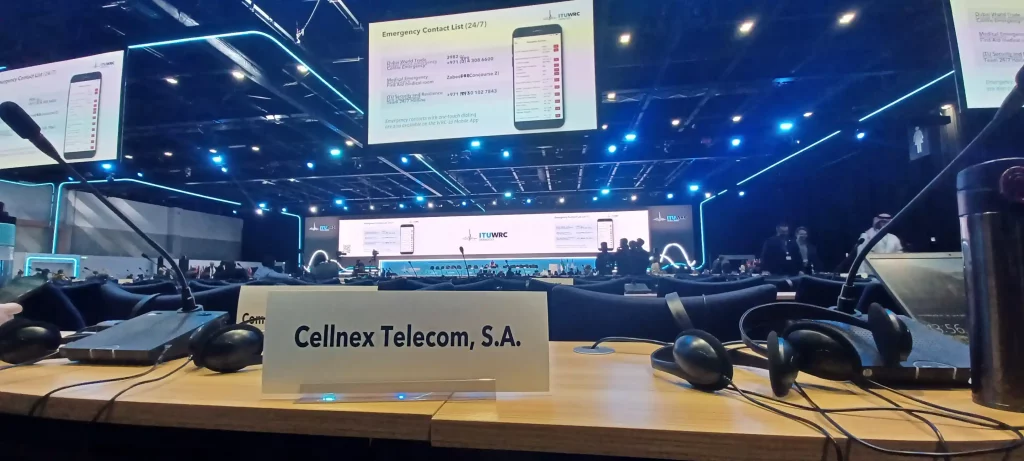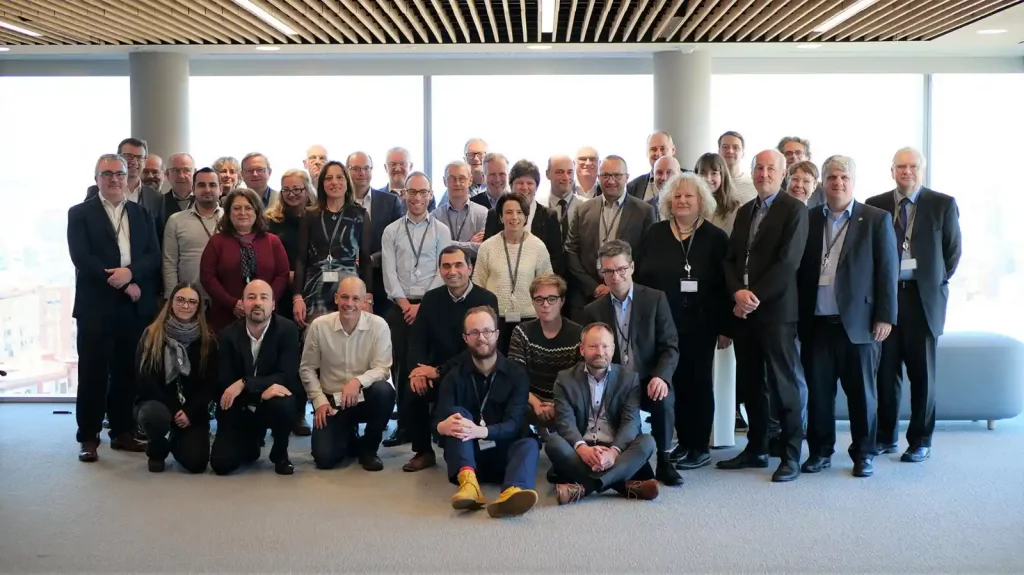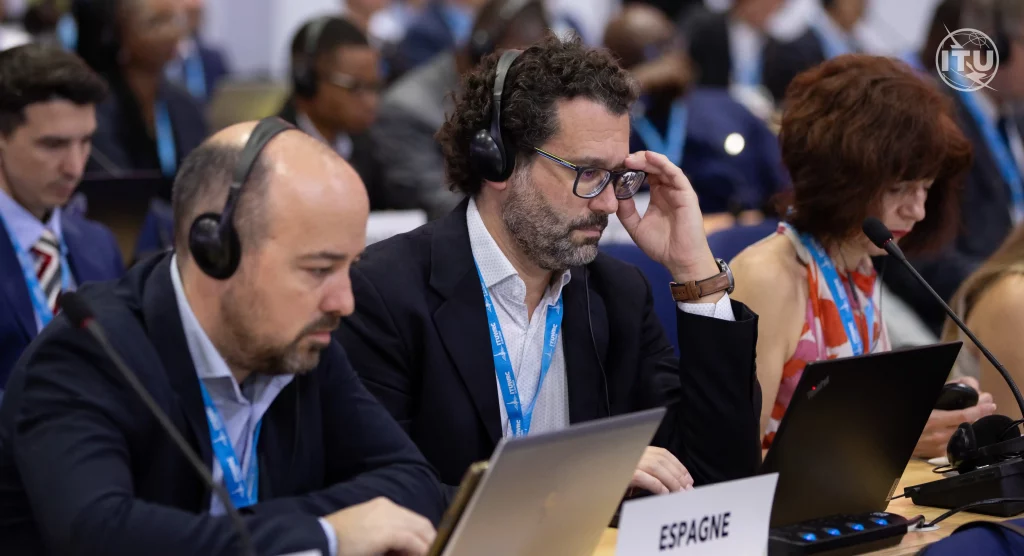Trends
Trends
JAN
31
2024
Global
What happened at WRC23?
ITU WRC23 (World Radiocommunication Conference) is over. After 4 intensive and long weeks, nights and weekends, the four year ITU (International Telecommunication Union) conference have been reached compromises, aiming to leave all parties equally unhappy. With the participation of over 3,900 delegates from 163 Member States, including 88 ministerial-level participants, there was a notable increase in female representation, rising from 18% at WRC19 in 2019 to 22%. The final outcome have been a great success for Cellnex interests.
The ITU WRC is the 3 or 4 years periodic review of the Radio Regulations, an international treaty governing the use of the radio-frequency spectrum and the geostationary-satellite and non-geostationary-satellite orbits, under the umbrella of the United Nations flag.
Broadcasting spectrum, always a controversial issue
Our main point of interest was Agenda Item (AI) 1.5, on the UHF (Ultra High Frequency) spectrum. As expected, it emerged as one of the most controversial issues, and its resolution was reached only on the final day, during the late hours. The outcome is a great scenario for Region 1 broadcasting interests, providing a minimum of 8 more years of certainty for broadcasting services in terms of access to the spectrum at ITU level. Important to note that the pressure during the WRC23 has been extreme and that African and Russian countries played a key role for the final agreement. For Europe, next discussions on broadcasting future are expected in Brussels and the Capitals.
This outcome is the result of several years of work, broadcasting joint efforts and European and Region 1 coordination. Since WRC19, the EBU (European Broadcasting Union, trade association of public service broadcasters) and BNE (Broadcast Networks Europe, broadcast networks operators trade association in Brussels) worked together with many other stakeholders to be ready for the Dubai discussions. We coordinated our efforts including, among others, discussions with Brussels policy makers, national Administrations and spectrum managers. Two key milestones have been the publication of the Broadcasting Innovation Roadmap and The Value and Contribution of Digital Terrestrial Television, alongside to the cooperation with the African broadcast community who strongly defended its position until the very end, despite tremendous pressure from mobile industry.
Another history has been for CEPT (European Conference of Postal and Telecommunications Administrations representing 46 European countries) and European Union (EU27). The initial position of CEPT was already a very delicate compromise of allocating the band on a secondary basis and a review of it uses in WRC31. It could be said that it has been mostly achieved (secondary allocation is there without Italy and Spain and the envisaged review includes the upper part of the band). However, we have had to work a lot to defend the European compromise. Anyhow, we can envisage that next year UHF spectrum discussions in Brussels will be complicated and some compromise and middle-ground solution needs to be drawn.
Finally, just to mention that we believe that the CEPT PTD#8 held in Cellnex’ headquarters in February 23 helped, at least a bit, to the construction of the European position as it was a great opportunity for regulators to see the investments and equipment’s needed to ensure Broadcasting services in their visit to Collserola Tower (Barcelona, Spain).
Mobile vs WiFi, licensed vs unlicensed
Another point of high interest and difficult agreement has been the discussion on the future mobile-IMT bands (spectrum for MNOs), mainly on the 6425-7125MHz (the 6GHz) band. The final outcome of AI1.2 fulfils the necessary conditions to allow the use in Europe (and full ITU Region 1) of the band, or parts of thereof, for the MNO’s to provide services. However, the same outcome recognizes the possibility of using the band as an unlicensed WiFi. The final use is to be decided in Brussels on a later stage but WRC23 has paved the way for potential mobile usage.
Here, an international massive debate among MNO’s and WiFi supporters happened and we can conclude that, even MNO’s have somehow won, the issue is far from being solved. The future use of the band in Europe remains to be discussed.
6G and additional spectrum for mobile
AI10, setting the agenda for WRC27, includes further studies for mobile-IMT bands allocation and identification (more spectrum for MNOs), and does not include any reference to studies or further works on UHF (470-694MHz).
Also of interest to mention that the week before of the start of WRC23, the Radiocommunication Assembly, agreed on “IMT-2030” as the technical reference for the 6th generation of International Mobile Telecommunications, the so-called 6G (see ITU-R M. 2160). The next phase will be the definition of relevant requirements and evaluation criteria for potential radio interface technologies. The ITU work (and its dialogue with 3GPP at Study Group level) is required not only to allocate spectrum but also to agree on the definitions of the requirement of future IMT-2030/6G standards. So, the way to 6G is set from the formal point of view.
The world keeps spinning, new voices raise
26 days in Dubai for the WRC23 have been long and intense but also a great opportunity to learn, to learn a lot. For sure to learn how to discuss policy makers about Cellnex interests. But also to learn about how complicated are the international negotiations, the interpersonal relations or the interregional deals. I made a master class on how to play with time in negotiations, how to block 100 people meetings, how to resist the pressure or how to impose your hidden agenda despite the voice of many sovereign countries.
Finally, it is noteworthy to observe the shifting dynamics on the global stage during WRC23; the growing assertiveness of Africa, the negotiation strategies from some nations, the efforts to maintain geopolitical influences, and, last but not least, the very delicate European equilibrium, sometimes weakening its voice. All of them signs of the complexities of current and future times.
Jaume Pujol
Global Head of Regulation at Cellnex




















